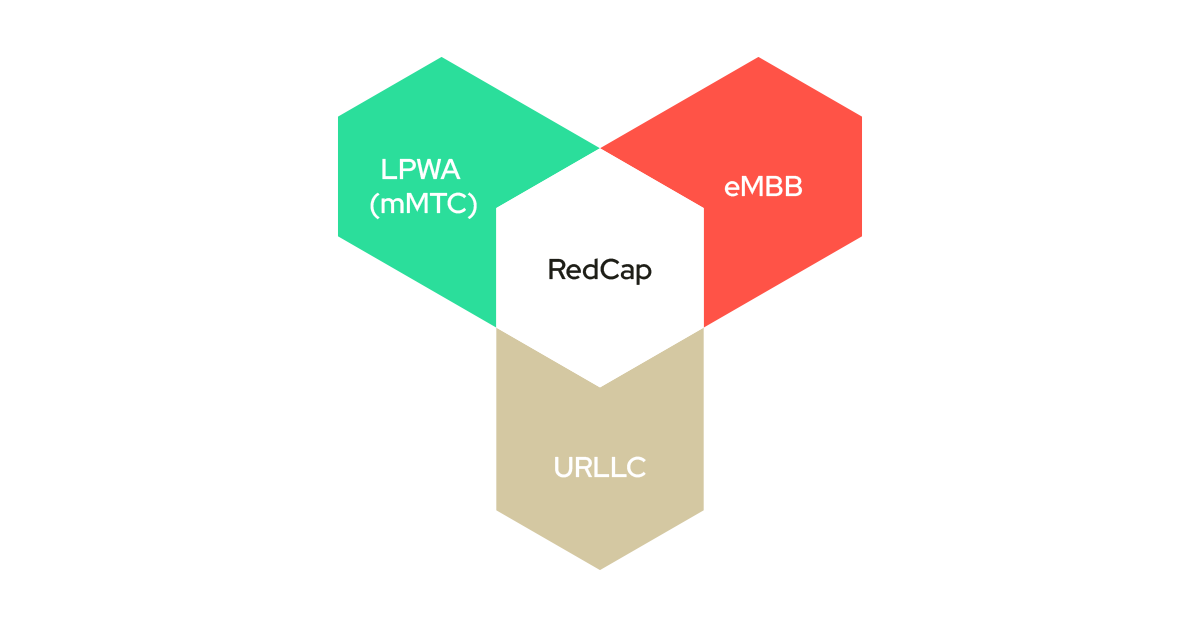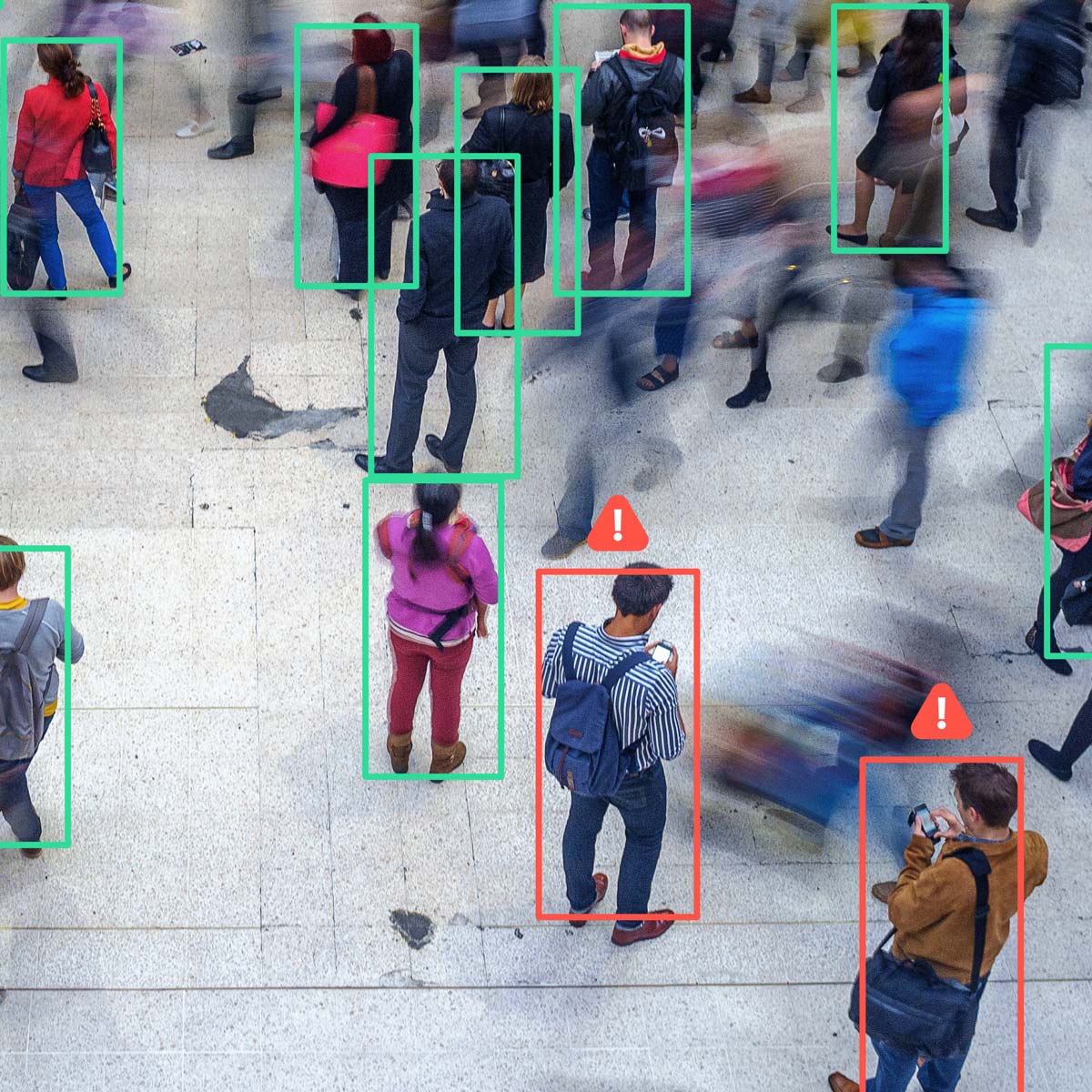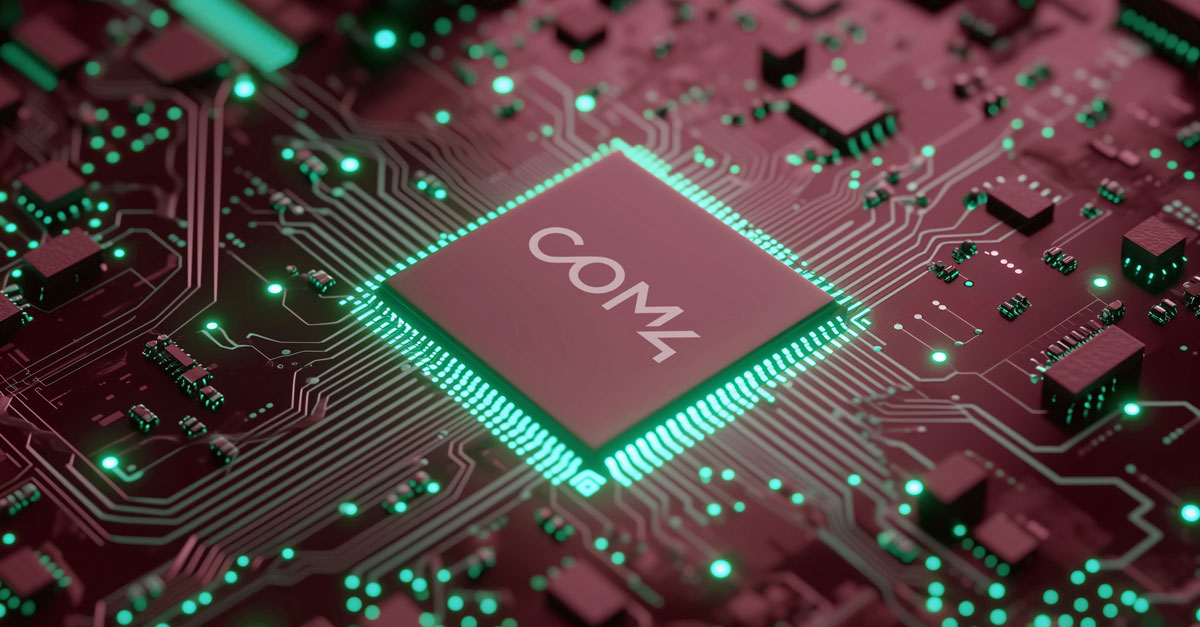However, the high cost associated with full-scale 5G deployment poses challenges, especially for IoT applications that require cost-effective solutions.
To address these challenges, 3GPP Release 17 introduced 5G RedCap, a technology designed to offer a balanced feature set while aligning with essential factors such as power consumption and cost-effectiveness. This development democratizes 5G technology, making it accessible for a broad range of IoT applications.
What is 5G RedCap?
5G RedCap, initially known as 5G NR-Light and later designated as 5G Reduced Capability in 3GPP Release 17, represents a streamlined adaptation of traditional 5G standards. This technology is engineered specifically for IoT applications that need more than what LTE can offer but do not require the full spectrum of 5G's capabilities.
By bridging the gap between the high-speed demands of enhanced Mobile Broadband (eMBB), the reliability and responsiveness of Ultra-Reliable Low-Latency Communications (uRLLC), and the extensive connectivity of Massive Machine Type Communications (mMTC), 5G RedCap provides an optimal balance. It delivers adequate throughput and lower latency at a fraction of the cost and complexity typically associated with comprehensive 5G implementations, making advanced 5G technologies accessible for a wider range of IoT applications.
Bandwidth and Technical Specifications of 5G RedCap
5G RedCap is engineered to bridge the gap between the capabilities of 4G and 5G, offering a targeted solution for IoT applications. The table below outlines the key features of 5G RedCap compared to standard 5G:
|
Feature |
5G Standard |
5G RedCap |
|
Bandwidth |
100 MHz |
20 MHz |
|
Antennas |
4 RX antennas |
Reduced number |
|
Latency |
Ultra-low |
Low (as low as 5 ms) |
|
Peak Data Rate |
Very high |
High enough for IoT applications |
|
Power Efficiency |
Moderate |
High |
|
Complexity |
High |
Reduced |
These adjustments make 5G RedCap an ideal platform for powering low-complexity LTE and NR devices within the IoT spectrum, particularly beneficial for applications where cost and battery life are critical considerations.
Advantages of 5G RedCap for IoT
Enhanced Data Rates
Compared to traditional LTE Category 1, 5G RedCap supports significantly higher data rates. This makes it ideal for applications requiring greater data throughput, such as HD video surveillance and complex smart grid management.
Reduced Latency
5G RedCap significantly undercuts most Low Power Wide Area (LPWA) technologies, such as NB-IoT, making it suitable for applications like industrial automation where near real-time responses are crucial.
Improved Power Efficiency
One of the standout features of 5G RedCap is its enhanced power efficiency, which extends the battery life of IoT devices. This is particularly beneficial for devices that are either mobile or deployed in remote areas, such as environmental sensors or wearable health monitors.
Simplifying Design and Reducing Costs
With its reduced complexity, 5G RedCap simplifies the Radio Frequency (RF) design process, leading to fewer antennas being needed. This simplification not only reduces the physical and engineering challenges associated with device design but also significantly cuts down on the costs associated with RF components and overall module production. As a result, manufacturers can produce devices at a lower cost, making the technology more accessible and encouraging wider adoption in IoT applications. This combination of reduced complexity and cost positions 5G RedCap as an ideal solution for a broad range of Internet of Things (IoT) applications, enhancing connectivity while maintaining efficiency and affordability.
5G RedCap Use Cases
5G RedCap is versatile, supporting a broad array of IoT applications:
- Industrial Automation: By connecting wireless industrial sensors, 5G RedCap facilitates real-time monitoring and control of equipment, enhancing operational efficiency and safety.
- Real-Time Security and Surveillance: The ability to transmit high-definition video in real time makes 5G RedCap ideal for security applications, helping to deter crime and enhance monitoring.
- Smart Grid Technology: In energy management, 5G RedCap enables more efficient and reliable monitoring and control of electrical grids, optimizing energy distribution and reducing wastage.
- Health and Fitness Wearables: For personal health monitoring, 5G RedCap ensures continuous, real-time data transmission from devices like fitness bands and smartwatches, helping users maintain their health and wellness.
.png?width=1200&height=627&name=5g-use-cases%20(1).png)
The following table provides a detailed overview of the specifications for different 5G RedCap applications:
|
Use Case |
Device Type / Application |
Latency |
Battery Life |
|
Industrial Wireless Sensors |
Midi-tier Sensors (Temperature, Pressure, etc.) |
<100 ms; Safety applications: 5 ms to 10 ms |
~2 years |
|
Video Surveillance |
Smart Cities, Agriculture, Factories |
<500 ms |
N/A |
|
Wearable Technology |
Smartwatches, Health Monitors |
N/A |
Multiple days up to 1-2 weeks |
Timeline and Adoption of 5G RedCap
The deployment of 5G RedCap is anticipated to occur gradually. Chipsets enabled with 5G RedCap are already on the market, with broader availability expected in the coming years. Early adopters are likely to be regions with existing advanced cellular infrastructure, such as Europe, the United States and selected countries in the Asia-Pacific region.
Concluding comments
5G RedCap heralds a new era in IoT connectivity, providing a cost-effective solution that balances performance with complexity. It extends the benefits of 5G to a wider range of applications, enabling industries and consumers to leverage enhanced connectivity without the need for high-end 5G features. As 5G continues to evolve, 5G RedCap is set to play a pivotal role in the broader adoption and deployment of IoT technologies.






